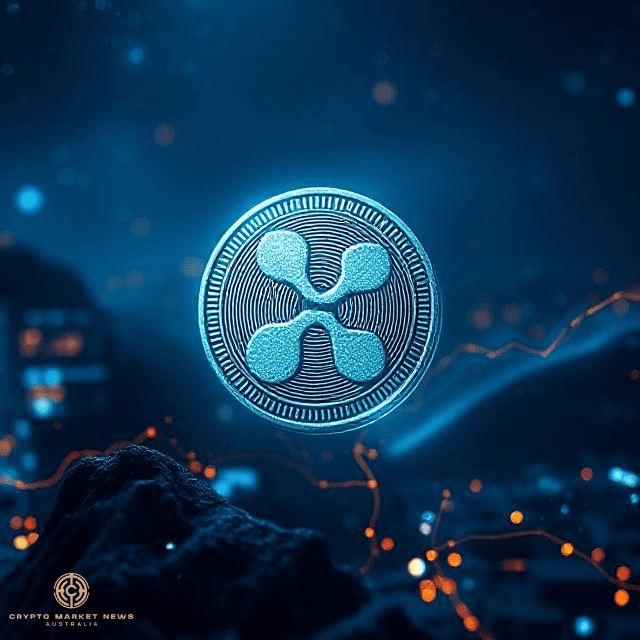Ripple, a blockchain company behind the native coin XRP, has made a major move in the cryptocurrency market. It has signed an agreement to purchase prime brokerage firm Hidden Road. The deal is estimated to be valued at $1.25 billion.
This is without a doubt the biggest and most significant move yet in Ripple’s effort to expand its offerings to institutional clients. The seven-year-old crypto startup has taken substantial steps forward and this deal is huge for them and major crypto news.
One of the Largest Deals in Digital Assets
With the acquisition of Hidden Road, Ripple is making one of the biggest moves in the entire digital asset space to date. Stripe, which purchased Bridge for $1.1 billion in February, set the standard and Ripple has now topped it. Ripple CEO Brad Garlinghouse talked about the deal, saying that it came together when Hidden Road found itself “constrained” in growth because of balance sheet limitations. That’s when it began looking for external capital.
“This is a big deal for Ripple – but also a big deal for the industry,” Garlinghouse said. “As the entire crypto industry gets more into traditional finance, we need top tier infrastructure to be able to support the financial institutions that want to come in.”
In a 2024 share buyback, Ripple was last valued at $11.3 billion. Garlinghouse noted that once the transaction closes, the plan is for Hidden Road to use its native RLUSD stablecoin as collateral for its prime brokerage products.
“Collateral is key” when it comes to the prime brokerage services industry, noted Garlinghouse. Institutional investors and hedge funds generally require some form of collateral in order to take out loans or other complex trading positions such as short selling.
The acquisition of Hidden Road still has to go through the necessary channels for regulatory approval. Garlinghouse noted in an interview after the purchase was announced that he expects the deal to close by the third quarter of 2025, at the latest.
Regulatory Impacts
Ripple was aided in this deal in part because of a major victory last month. It was announced that the U.S. Securities and Exchange Commission would drop a protracted legal case against Ripple. The case accused the company of conducting an illegal securities offering.
In general, the crypto industry has seen a boost since the re-election of Donald Trump as U.S. President. He has been very vocal about the benefits of crypto and has been promising favorable policies throughout the industry.
Garlinghouse was asked about whether a more pro-regulatory environment would give Ripple more motivation for a prime brokerage takeover. He said that “deals like this make a lot more sense when you have a supportive regulatory environment – as opposed to the open warfare legal tactics.”
Garlinghouse has been vocally critical of the SEC in the past, including its leader Gary Gensler. The latter oversaw aggressive legal action against not only Ripple, but multiple crypto firms.
Increased Demand for XRP?
Though Ripple is touting the move as being nothing short of exceptional, there are those with concerns. For instance, what is the fate of Ripple’s native coin XRP? Well, some financial sexperts think that the purchase could actually provide a nice boost for XRP.
According to financial consultant Jake Claver, even if a portion of the $10 billion trading volume possessed by Hidden Road flowed through XRPL, the native coin could see a huge increase in demand. Claver argues that it isn’t retail traders, but hedge funds and market managers that would require XRP to power their operations.
Claver also suggested that the Hidden Road move would set up a variety of new utilities. One of them could be to utilize XRP for cross-border payments. Some have speculated that the purchase could see XRP sidelined to use Hidden Road’s RLUSD.
No Sidelining XRP
As mentioned, the biggest concern from XRP holders is that it could eventually be replaced by Hidden Road’s utility RLUSD. Given that the latter was identified as the single biggest asset for collateral within Hidden Road’s offerings, those fears are certainly understandable.
That said, experts have projected that the acquisition poses no threat to XRP as a utility. If anything, they estimate, it could be an expansion of its reach potential. Experts feel that Garlinghouse, and fellow Ripple executive David Schwartz, have both commented on integrating the XRP Ledger (XRPL) into global capital markets. That would result in a new phase for the utility of XRP.
Ripple has had ambitions in retail remittances but hasn’t been able to scale quite to the levels they anticipated. Ripple’s enterprise payments are on the rise, but they are shifting what their definition of “payments” is.
Rather than putting a focus on individual transfers, Ripple is opting to tap into treasury flows and institutional liquidity. This is an area where XRP could potentially have a major role to play. It has been suggested that the involvement of XRP in institutional clearing, settlement, and liquidity management could make the asset vital in far more lucrative markets than retail.
XRP and RLUSD Acting as Complements
RLUSD is a stabled regulated asset. Because of that, it acts as a suitable collateral for institutions that have very low tolerances for risk. That said, XRP remains necessary for facilitating asset bridging, liquidity movement, and even cross-border currency flow.
It has been argued that the design of XRP, with easy movement across “walled gardens” in the crypto industry, has made it a vital component in the shifting infrastructure that Ripple is about to create. Even if it isn’t the most valuable asset anymore, it still has a critical role to play.
XRP community members have been discussing the impact of the acquisition as well. One member feels that not all institutions will want to hold onto a more volatile asset like XRP within their balance sheets, which is certainly a point.
That said, XRP still has the ability to function effectively. It can be a bridge between liquidity pools and the litany of stablecoins essentially reinforcing the notion that both XRP and RLUSD can not only coexist but even provide support for one another over the long term.
Experts note that XRPL is still growing, slowly becoming a platform for comprehensive financial infrastructure. Naturally, that means a vast array of diverse assets. Within that environment, XRP won’t lose relevance, but will gain new utility.
Why Ripple Continues to Thrive
Banks and other financial institutions continue to use Ripple for cross-border payments. When they execute these transactions, they are able to use XRP as a form of bridge currency or they can leverage the platform’s messaging system in order to optimize existing currency transfers.
Ripple’s architecture is effective for global transactions because of its cost-effectiveness, speed, and overall scalability. The latter is especially important as major growth within the crypto space is projected thanks to more favorable regulatory rules anticipated to come down.
The move indicates that Ripple is a major player and will be for some time to come. Whether they are able to successfully marry their native utility with RLUSD remains to be seen, but investors will be watching keenly to see how the new Ripple infrastructure develops.

